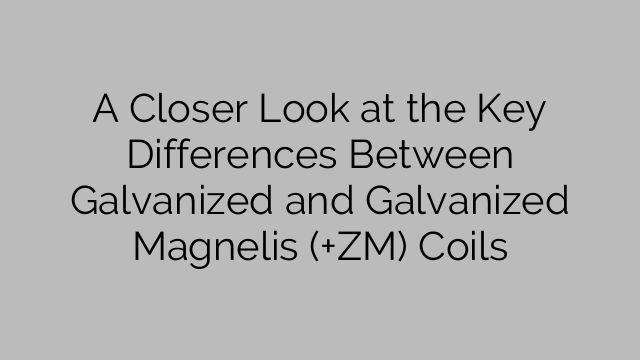There are many factors to consider when choosing the right type of steel for your project. Among the most important are the coating options available for steel coils. Galvanizing is a common method of coating steel that prevents corrosion and rust. However, there is a newer option on the market known as Galvanized Magnelis (+ZM) that offers some distinct advantages over traditional galvanized steel. Understanding the differences between the two coatings can help you make an informed decision for your project.
Galvanized steel coils are coated with a layer of zinc to protect the steel from rust and corrosion. This is achieved through a process called hot-dip galvanizing, where the steel is immersed in a bath of molten zinc. This coating forms a durable and effective barrier against the elements, making galvanized steel ideal for outdoor and industrial applications.
On the other hand, Galvanized Magnelis (+ZM) is a relatively new coating that combines zinc, magnesium, and aluminum to provide an even stronger and longer-lasting protection for steel. This innovative coating offers enhanced corrosion resistance, improved adhesion, and superior cut-edge protection compared to traditional galvanized steel. Galvanized Magnelis (+ZM) also boasts self-healing properties, meaning that any minor scratches or cuts to the coating will automatically heal over time, further extending the lifespan of the steel.
When it comes to the key differences between traditional galvanized and Galvanized Magnelis (+ZM) coils, the most notable are the enhanced corrosion resistance and the self-healing properties of the latter. Galvanized Magnelis (+ZM) is designed to withstand even the harshest environments, making it a preferred choice for projects in coastal areas, chemical plants, and other corrosive environments. Additionally, the improved cut-edge protection means that the edges of the steel are less susceptible to rust, further extending the lifespan of the material.
Another important difference between the two coatings is the adhesion properties. Galvanized Magnelis (+ZM) offers superior adhesion compared to traditional galvanized steel, providing a more durable and long-lasting protection for the steel surface. This makes it ideal for applications where the steel will be subject to high levels of wear and tear, such as in construction or automotive manufacturing.
In conclusion, both galvanized and Galvanized Magnelis (+ZM) coatings offer effective protection against rust and corrosion for steel coils. However, the key differences lie in the enhanced corrosion resistance, self-healing properties, and superior adhesion of Galvanized Magnelis (+ZM) over traditional galvanized steel. By understanding these differences, you can make an informed decision when selecting the right coating for your project, ensuring the longevity and durability of your steel.

